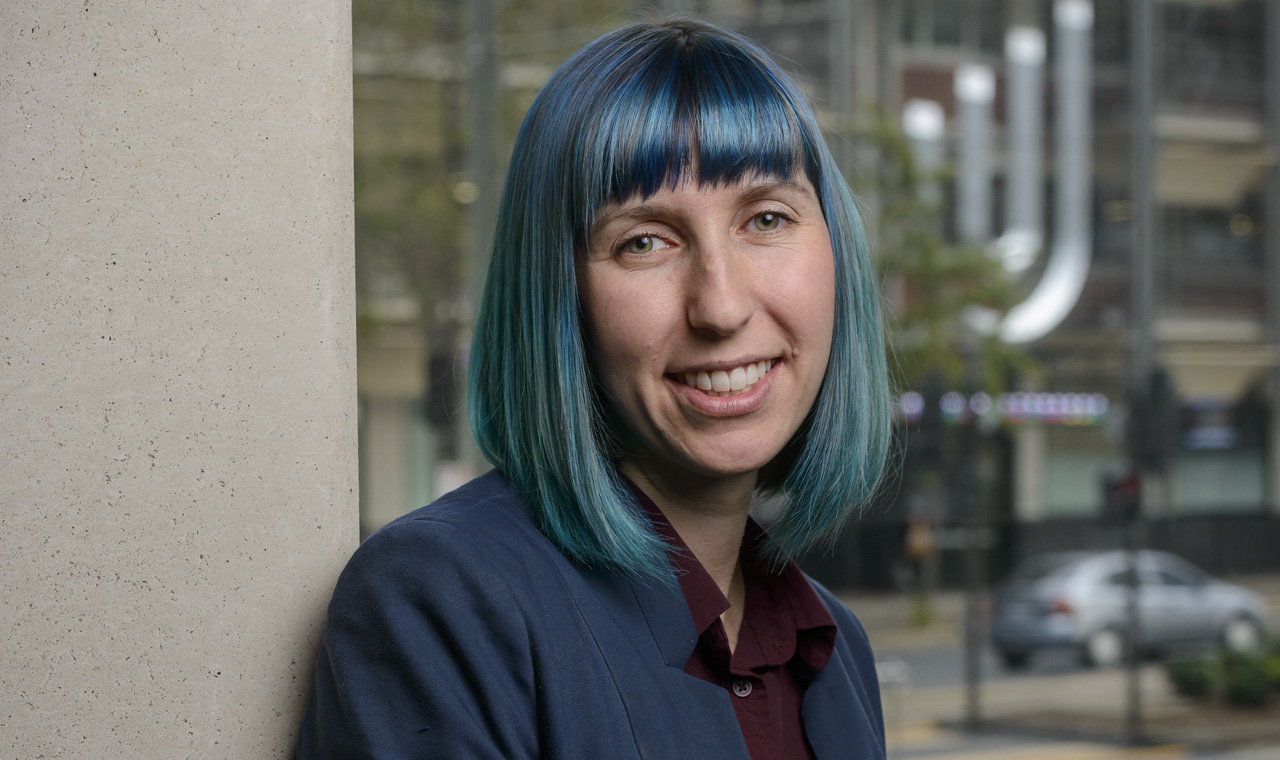Growing up in the country, Jacinta Johnson MPS always wanted to work in a healthcare role, and pharmacy seemed to offer opportunities that no other allied health profession could match.
AP: What attracted you to pharmacy?
JJ: I knew I wanted a career in allied health and pharmacy seemed super interesting. It amazed me that drugs could have such powerful effects on the body.
I also saw pharmacy as a diverse career pathway as it would be a health-related job and one that I could do almost anywhere.
AP: Why did you decide to pursue a career as a teacher-practitioner in the hospital setting?
JJ: As an undergraduate, I worked in a community pharmacy and thought that was where my career was going to continue into the future.
However, in the middle of my fourth year I asked myself: ‘Is an intern year in community pharmacy going to extend me beyond what I am doing at the moment?’. So I applied for an internship in hospital pharmacy, and I loved it.
AP: What are the biggest challenges you face on a day-to-day basis?
JJ: Similar to pharmacists working in other settings, the daily challenges involve managing competing priorities under what is sometimes an immense amount of time pressure. I try to pre-schedule all necessary tasks in to a given timeslot.
I’ve found it important and useful to even schedule the simple (but relevant) daily things that are part of the job. Tasks like reading over documents and responding to email are allocated a timeslot.
AP: What is the most satisfying aspect of your role?
JJ: In my teaching capacity, I love it when I see pharmacy students apply something I have taught them previously. I’m still a bit amazed when it dawns on me that I have helped to shape that future pharmacist.
In the hospital my role is Medication Safety Pharmacist, which means I am involved with lots of audits and other medication management projects and I love the research side of what I do.
AP: What advice would you give to pharmacy students considering the different career options available to them?
JJ: You have more than hospital and community roles to choose from. Look at your individual skill set and think about the aspects of pharmacy that you find the most rewarding.
AP: What value does PSA provide you in your career and professional development?
JJ: While the therapeutic update seminars and online modules are handy, I find the most value in the experiences that are available through PSA.
I think of these activities as the ‘doing-type’ of professional development, as by contributing to an activity they provide opportunities to build a broad range of skills – and often these skills are ones that you might not get to develop within the workplace.
A typical day for academic and hospital pharmacist Jacinta Johnson Southern Adelaide Local Health Network at Flinders Medical Centre
8.45am Attend to emails. The first job of the day is to review, sort and respond to email queries that have come through overnight.
9.15am Review Safety Learning System (SLS). Assess reports in the SLS, listing updates into categories and recording any medication errors that may have occurred in the previous 24 hours.
10.15am Protocol reviews. Assess any new protocols from a medication safety perspective to ensure the guidelines are clear.
12.15pm Lunchtime – university administration. Check emails from university account, and respond to students.
1.00pm Audit reports. Review SLS incidents and identify events that require a longer investigation.
2.30pm Education sessions. Host information events for hospital staff, including nurses, to educate them about the role of the pharmacist within the hospital.
3.30pm Meet researchers. Review medication research conducted by students and interns in the hospital, and discuss the next step in their studies.
4.00pm Medication safety meeting. A multidisciplinary meeting to discuss any medication incidents that have occurred and ways to improve.
Further Resources
Learn more at http://www.psa.org.au/about/pharmacy-as-a-career/what-pharmacists-do-and-where-they-work



 John Jones MPS, pharmacist immuniser and owner of My Community Pharmacy Shortland in Newcastle, NSW[/caption]
John Jones MPS, pharmacist immuniser and owner of My Community Pharmacy Shortland in Newcastle, NSW[/caption]


 Debbie Rigby FPS explaining how to correctly use different inhaler devices[/caption]
Debbie Rigby FPS explaining how to correctly use different inhaler devices[/caption]




 Professor Sepehr Shakib[/caption]
Professor Sepehr Shakib[/caption]

 Lee McLennan MPS[/caption]
Lee McLennan MPS[/caption]
 Dr Natalie Soulsby FPS, Adv Prac Pharm[/caption]
Dr Natalie Soulsby FPS, Adv Prac Pharm[/caption]
 Joanne Gross MPS[/caption]
Joanne Gross MPS[/caption]








